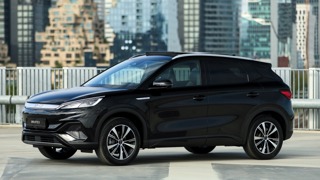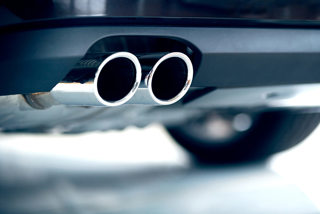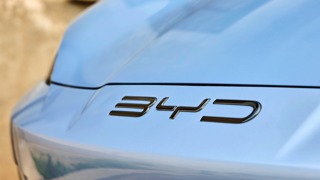Average CO2 emissions for new cars across Europe fell by 3.2% to 119.3g/km, according to the annual CO2 analysis carried out by Jato Dynamics.
The analysis, which covered 23 European markets, found that average emission were 4g/km lower than the total seen in 2014 and 7.5g/km lower than the figure registered in 2013.
The improvement is due to significant reductions coming from small and midsize markets (including Norway and Switzerland), better results posted by big volume car makers and increasing numbers of electric vehicle registrations.
The reduction coincided with a 9.3% rise in registrations in the 23 markets studied across the same period, further emphasising the headway being made.
Peugeot leads the volume brands
Peugeot was the new emissions leader for 2015, ahead of Citroën and Renault, with improvement of 5.8g/km compared to 2014.
The French brand’s total average CO2 emissions decreased from 109.3g/km in 2014 to 103.5g/km in 2015.
Peugeot posted the second best improvement among the top 20 brands, buoyed by progress from the 1.0 and 3 cylinder petrol engines that power the Peugeot 108. The other Peugeot models that contributed to the overall improvement were the 308, with an average of only 97.8g/km (vs. 102.3 in 2014), and the Peugeot 208 at 99.3g/km.
Citroën, the other volume brand within the PSA Group, occupied second place with 105.7g/km, down 5.1g/km on 2014. This was driven by the higher volumes achieved by the Citroën C4 Cactus (up 173%), the second best-selling Citroën in 2015 and the model that posted the second lowest average emissions for the brand this year.
Renault dropped two places to third in 2015, as the brand sold more SUV/Crossovers with bigger engines. The Captur’s registrations increased by 17%, while its average CO2 emissions increased from 105.7g/km in 2014 to 106.2g/km in 2015. The new Kadjar compact SUV, introduced in the second half of 2015, counted for 5.1% of Renault registrations with average CO2 emissions of 112.9g/km. The real progress was made by the Clio (down 2.1g/km) and the Twingo (down 6.1g/km).
Fourth place was claimed by Toyota, which managed to reduce its average emissions by 4.9g/km to 107.7g/km in 2015. Last year, Toyota’s hybrid vehicles counted for 29% of its registrations, three more percentage points than in 2014.
Nissan stayed in fifth, posting the highest average increase in CO2 emissions among the top 20. The Japanese brand recorded a rise in the average emissions for its top-seller – the Qashqai - from 115g/km to 116.3g/km in 2015, due to increased sales of the 1.2 115hp and 1.6 120hp petrol engines.
Skoda was the most improved brand in the top 20, reducing its average CO2 emissions by 6.2g/km thanks to the new generation Fabia. The model included more efficient engines in 2015, allowing this subcompact to reduce its emissions from 121.6g/km in 2014 to 107.1g/km. Fabia sales rose 38% in 2015, and counted for 26% of Skoda’s registrations.
Volkswagen, the largest car brand in Europe, posted the third best performance. Its average emissions dropped by 5.6g/km from 123.4g/km in 2014 to 117.8g/km in 2015. Volkswagen benefitted from the new Passat, which featured improved engines that allowed the model to improve its average emissions from 129.2g/km in 2014 to 114.1g/km last year.
Outside the top 20, Land Rover reduced its emissions by 11.4g/km) while Smart's average remained low – just 94.3g/km - despite the introduction of the larger Forfour model.
Felipe Munoz, global automotive analyst at Jato Dynamics, said: “There are a number of reasons for the improvements in CO2 emissions in 2015. The introduction of lighter models, more efficient engines, and increased sales of hybrid and electric vehicles, all contributed to a positive outlook for further emissions reductions in the future.”

Large saloons and SUVs among the best improvers
All segments recorded a reduction in average CO2 emissions in 2015 compared to 2014. The averages follow the expected patterns according to size, weight and engine type. For example, the city car segment posted the lowest average at 104.1g/km ( down 1.6g/km), followed by the subcompacts and compacts at 107.6g/km and 110.6g/km respectively. The midsize sedan/SW was fourth with 121.8g/km and then the small MPV was fifth with 122.6g/km. The average CO2 emissions recorded by SUVs remained behind the midsize and large saloon segments at 143.7g/km. Luxury and Sports cars registered the highest CO2 emissions average at 182.6g/km and 154.8g/km respectively.
The biggest improvements came from the upper segments such as big MPVs (down 10.5g/km), SUVs ( down 8.3g/km) and large saloons/SW ( down 7.7g/km).
Munoz added: “Despite the average emissions level in the SUV segment remaining high in 2015, the improvements made are promising for the industry and its future strategies for reducing emissions - especially given status of SUVs as the best-selling segment in Europe.”

Norway records lowest average emissions
Norway overtook the Netherlands to record the lowest average emissions across Europe, with its emissions average falling from 110.5g/km in 2014 to 100.5g/km in 2015. It also recorded the highest reduction of all 23 countries. Last year zero-emissions car registrations increased by 42% and counted for 17% of total market. The Netherlands recorded an average of 101.3g/km, with hybrid and electric cars counting for 12% of the market in 2015 against 7.8% in 2014.






















Login to comment
Comments
No comments have been made yet.